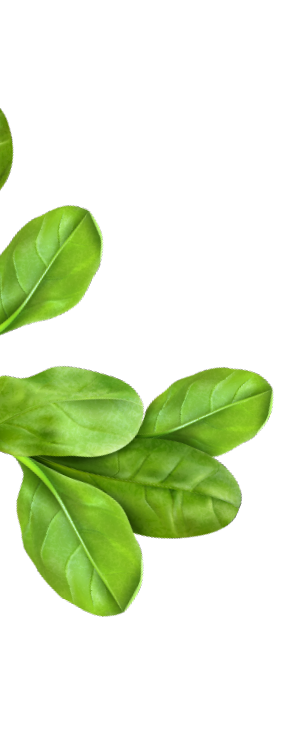Not all bonsai trees are created equal! There are just some bonsai trees that are more beautiful and better to care for. The reason being bonsai trees are cultivated to resemble miniature versions of larger trees. Beautiful bonsai trees, such as Japanese flowering cherry trees, are particularly appealing due to their pliable branches and trunks, making them easy to train and perfect for outdoor growth during the summer months. Most perennial woody-stemmed trees or shrub species can be grown and artfully formed into bonsai trees. Bonsai art enhances the visual appeal of these trees, with options like Bougainvillea adding vibrant flowers and unique growth characteristics. The best characteristics of well-forming bonsais have small leaves and needles. Once sprouted, the bonsai trees will grow to fit their environment. Choose the best bonsai trees to care for from seedlings to natural, fully grown trees.
Jacaranda Mimosifolia - Brazilian Rosewood
The Brazilian Rain Tree is a stunning native species of south-central South America, renowned for its beauty and popularity in bonsai cultivation. It is a subtropical plant characterized by its luscious blue and lavender colored flowers. Their green leaves are compound and fern-like. Their branches are zig-zag and slender.

Pinus Aristata - Bristlecone Pine
Pines are among the most popular bonsai trees because of their ease to shape in a variety of styles. They are long-lasting evergreen trees that keep their needles up to 40 years on fully grown pines. Japanese white pine is particularly noted for its hardiness and suitability for bonsai cultivation. They are native to New Mexico and Colorado in the U.S. Their name refers to their formation. Beautiful clusters of pine needles with bristles on their cones.

Delonix Regia - Flame Tree
Similar to the Jacaranda, this is another brightly colored tree. As a deciduous tree, it undergoes seasonal leaf changes, showcasing its adaptability in various environments. The name refers to its vibrant red and golden hued flowers. It is a tropical tree from the legume family. It thrives in tropical and subtropical climates. The bark twists, the leaves are fern-like and its canopy takes on a natural umbrella shape.

Picea Mariana - Black Spruce
Native to the northern hemisphere, this is another type of coniferous evergreen tree species that can be cultivated as bonsai. Unlike the pine, they are spruces. Therefore, they are more difficult to shape but equally as beautiful. Their leaves are green and needle-shaped. The branches grow whorled and its canopy is a conical shape.

Ficus Religiosa - Buddha Bonsai Tree
This is a great bonsai tree for bonsai beginners. It is a semi-evergreen fig tree, part of the mulberry family. It’s name derives from the ancient story of the buddha who attained enlightenment meditating underneath this type of tree. This forgiving tree is known for its resilience and low-maintenance nature, making it ideal for novice bonsai enthusiasts. They are native to the Indian subcontinent and southeast Asia. They prefer tropical climates but can be grown in a variety of climates. The leaves are green with a heart shape and drip tip.

Pinus Thunbergii - Japanese Black Pine
Like the Bristlecone Pine, these are easy to shape in a variety of different bonsai styles. The Japanese Black Pine is particularly noted for its adaptability and resilience, making it an excellent choice for bonsai training. They are a variety of coniferous evergreen pine trees. Their needles grow in clusters of two. They are strong, long and dark green needles, native to Japan and grow by the sea.

Pinus Densiflora - Japanese Red Pine
Similar to Japanese Black Pines, these are coniferous evergreens pine trees. There are various bonsai tree types within the pine species that are suitable for bonsai cultivation, especially for beginners. Unlike the Black Pines, they are delicate and slender. Their needles are thinner and softer. They are native to Japan but grow a little further away from the sea.

Metasequoia Glyptostroboides - Dawn Redwood
They were first discovered in China but exist all around the world. They are strong and tall trees. They have light green leaves and needle-shaped leaves. They can grow very rapidly. Miniature trees, created through meticulous trimming and pruning techniques, allow various tree species to be trained and shaped into smaller versions of their full-sized counterparts.

These species of bonsai trees are perfect for beginners, moderate to advancement bonsai caretakers. They do well in both indoor and outdoor settings with the proper care and maintenance. Growing these spectacular bonsai trees from start to finish will be a fun and fulfilling experience!
Featured Products:
|
Garden Republic Non-GMO Bonsai Trees Heirloom Seeds 8 Count
|
Bonsai Tree FAQ's
What are the best bonsai trees for beginners?
Some of the best bonsai trees for beginners include the Ficus Bonsai, Juniper Bonsai, and Chinese Elm. These trees are hardy, relatively easy to care for, and can adapt well to indoor conditions, making them ideal for those new to the art of bonsai.
Which bonsai trees are best suited for indoor growing?
Ficus, Jade, and Hawaiian Umbrella trees are popular choices for indoor bonsai. These species thrive in indoor environments due to their tolerance of lower light levels and stable temperatures. They also require less frequent watering, making them easier to maintain indoors.
How do I choose the right bonsai tree for my climate?
To choose the right bonsai tree for your climate, consider your local temperature, humidity, and seasonal changes. For colder climates, hardy trees like Juniper and Pine are ideal, while tropical species like Ficus and Jade thrive in warmer regions. It's important to match the tree's natural habitat conditions to your local climate to ensure successful growth and longevity.



